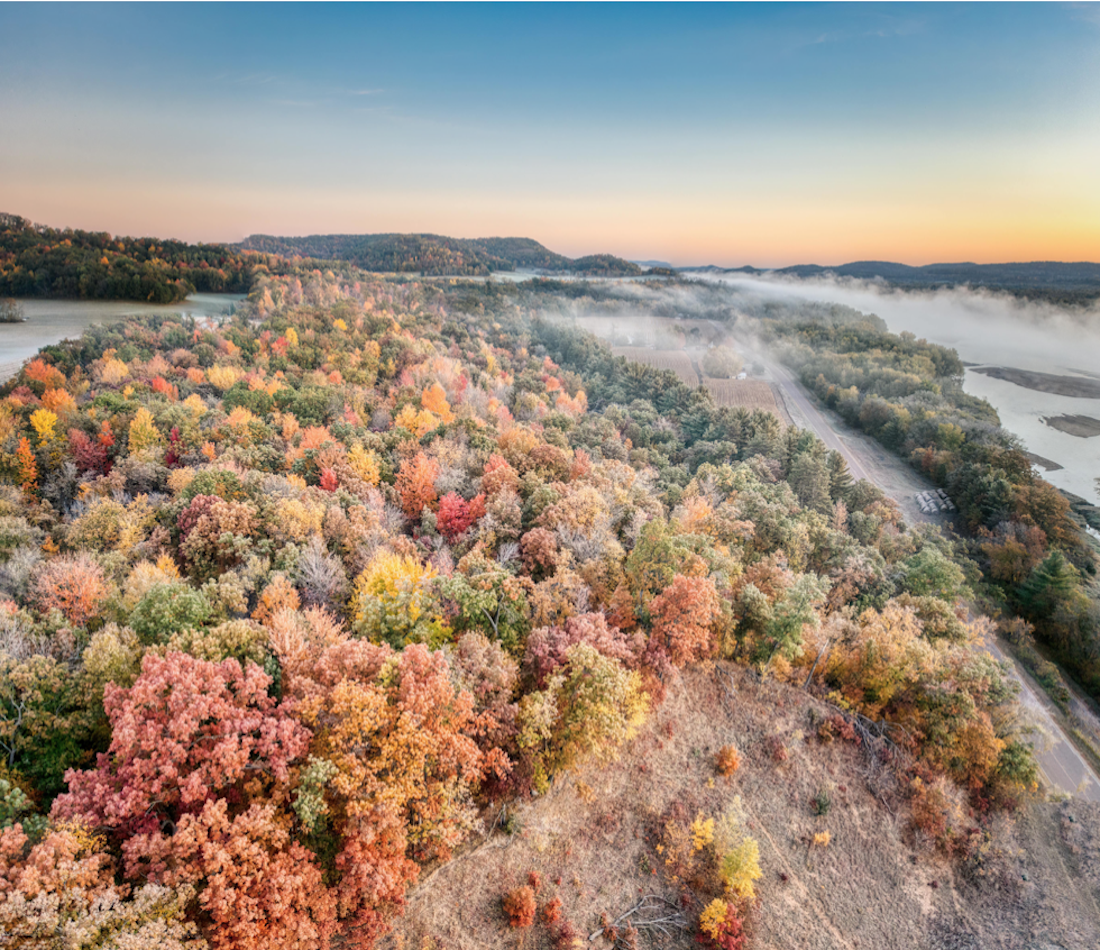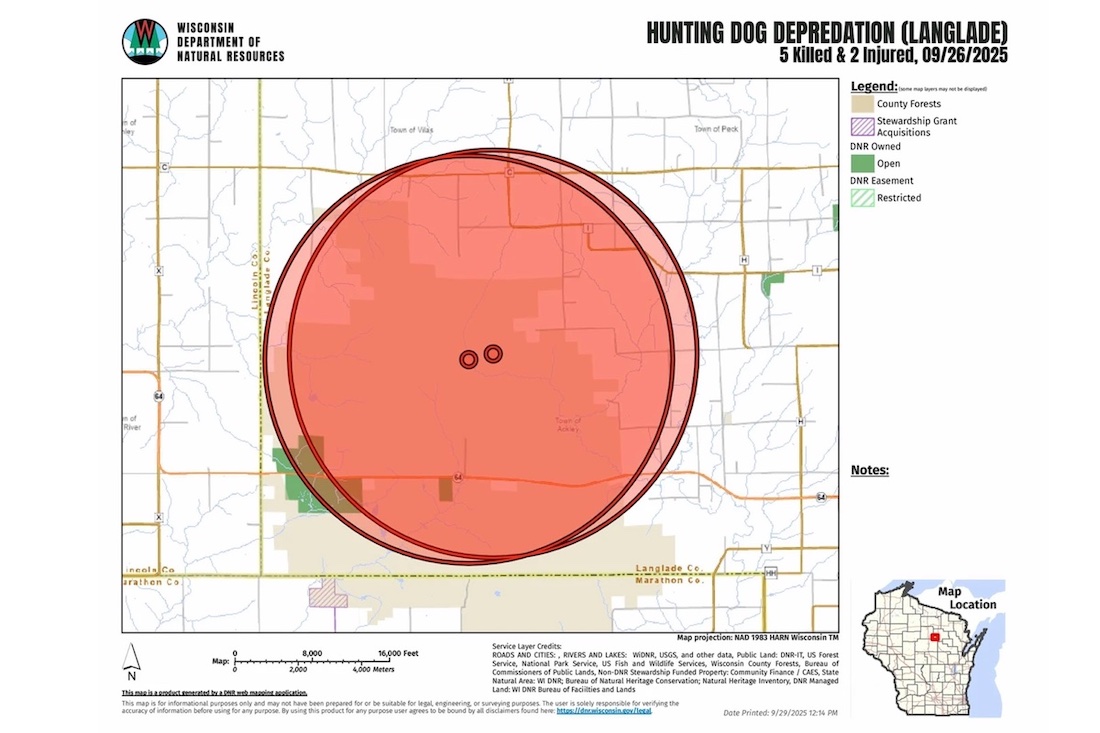
Keith Lusher 10.07.25

Gray wolves killed six bear hunting dogs and injured two others during a brutal 48-hour period in Wisconsin’s Langlade County last weekend, according to the state Department of Natural Resources.
The attacks unfolded across three separate incidents on September 26 and 27, marking one of the deadliest weekends for hunting dogs in recent years. USDA Wildlife Services confirmed wolves were responsible after investigating puncture wounds, tracks, and hair evidence at each scene.
The first attacks occurred Friday morning near the Ackley Wildlife Area when a group of bear hunters released seven dogs to pursue two black bears. The hounds, mostly Plott hounds with one Leopard curr, split up during the chase and ran into a wolf pack.

Hunters tracking their dogs’ GPS collars noticed the signals had stopped moving. When they reached the first location, they found three dogs dead and two injured. At a second site roughly 900 yards away, they discovered two more dogs killed.
“Likely these events happened simultaneously,” DNR assistant wolf specialist Danielle Deming told local media. She believes the same pack was responsible for both Friday attacks based on the close proximity.
The following day, wolves struck again about 15 miles north near Elcho. A hunter released a 7-year-old Plott hound to trail a bear, but the dog’s GPS collar stopped moving within minutes. The hunter reached the location in approximately five minutes but found the dog already dead.
According to Deming, most wolf attacks on hunting dogs occur when hounds inadvertently run through rendezvous sites, areas where wolf packs keep their pups after they’ve outgrown their dens. These concentrations of wolves are typical in late summer and early fall, and packs will aggressively defend these locations.
“The dog owners had noticed their dogs’ GPS collars had stopped moving on the receiver, so they followed the dogs’ trails into the woods,” Deming explained.
The timing aligns with DNR data showing most depredations happen during hound training season in July and August, and again during fall hunting season.
Wisconsin’s estimated 1,226 wolves killed 21 hunting dogs and injured 16 others so far in 2025. That’s roughly consistent with recent years: 24 killed and 10 injured in 2024, and 28 killed and 7 injured in 2023.
The DNR maintains an interactive map showing where depredations have occurred and designates “wolf caution areas” to warn hunters about packs that have previously attacked dogs.

“Once a pack has attacked a dog in a hunting or training situation, there is a high probability that another attack will occur again during the same year or within the following year,” the DNR states.
Because wolves remain federally protected in Wisconsin, every depredation requires a USDA Wildlife Services investigation. Confirmed cases make owners eligible for state compensation.
Hunters running hounds in wolf country should check the DNR’s depredation map before turning dogs loose.
Trending Products












